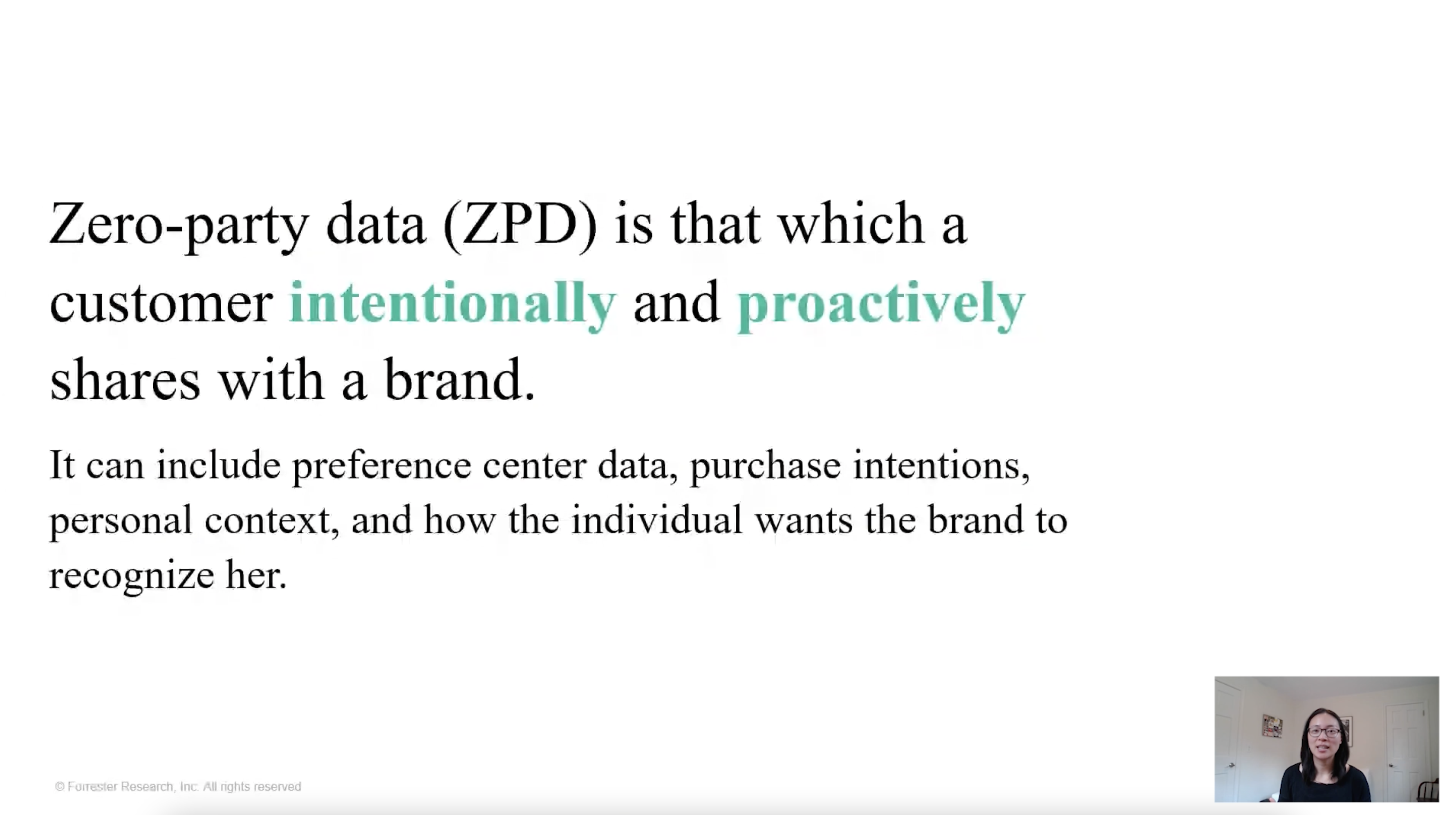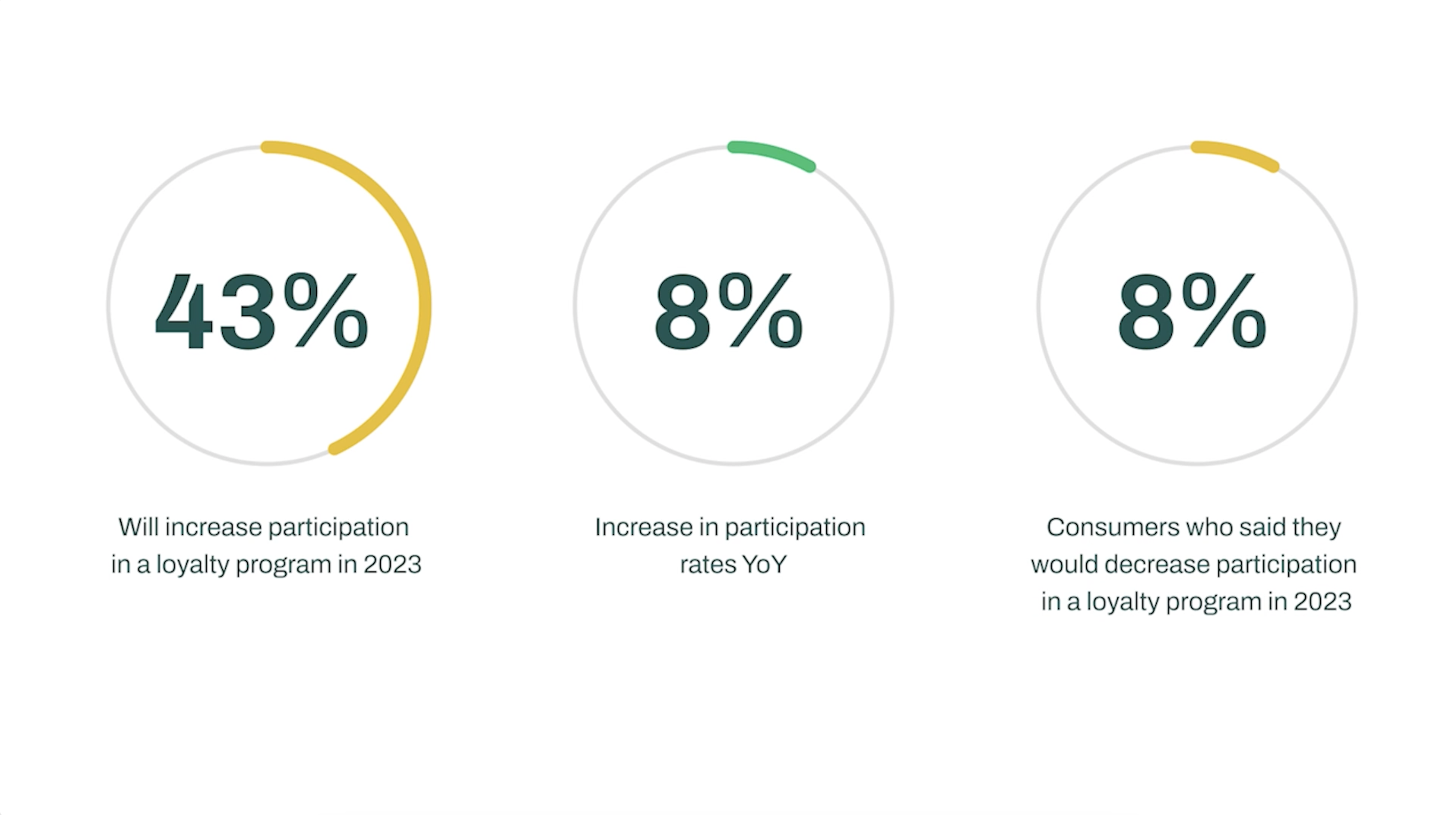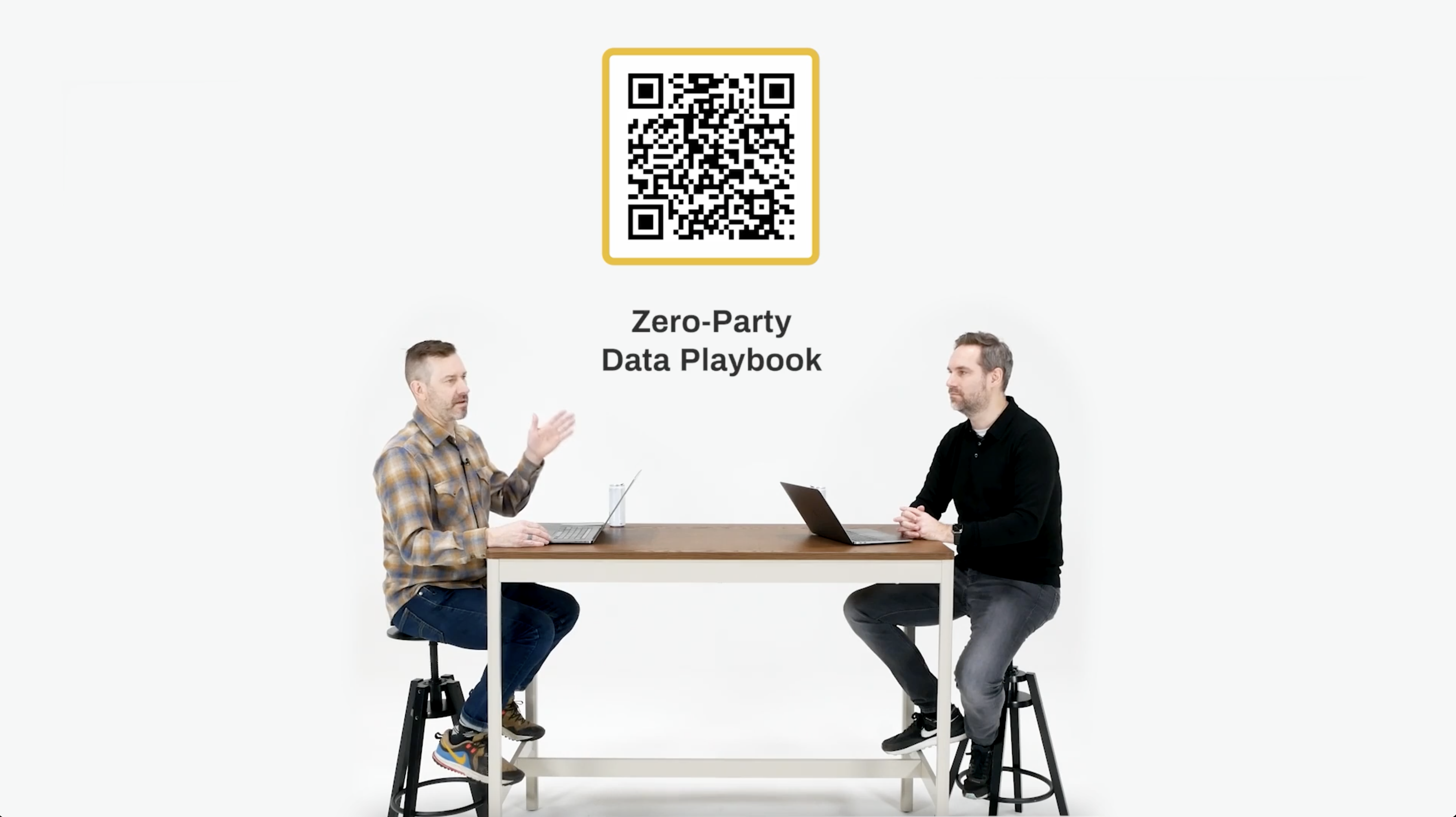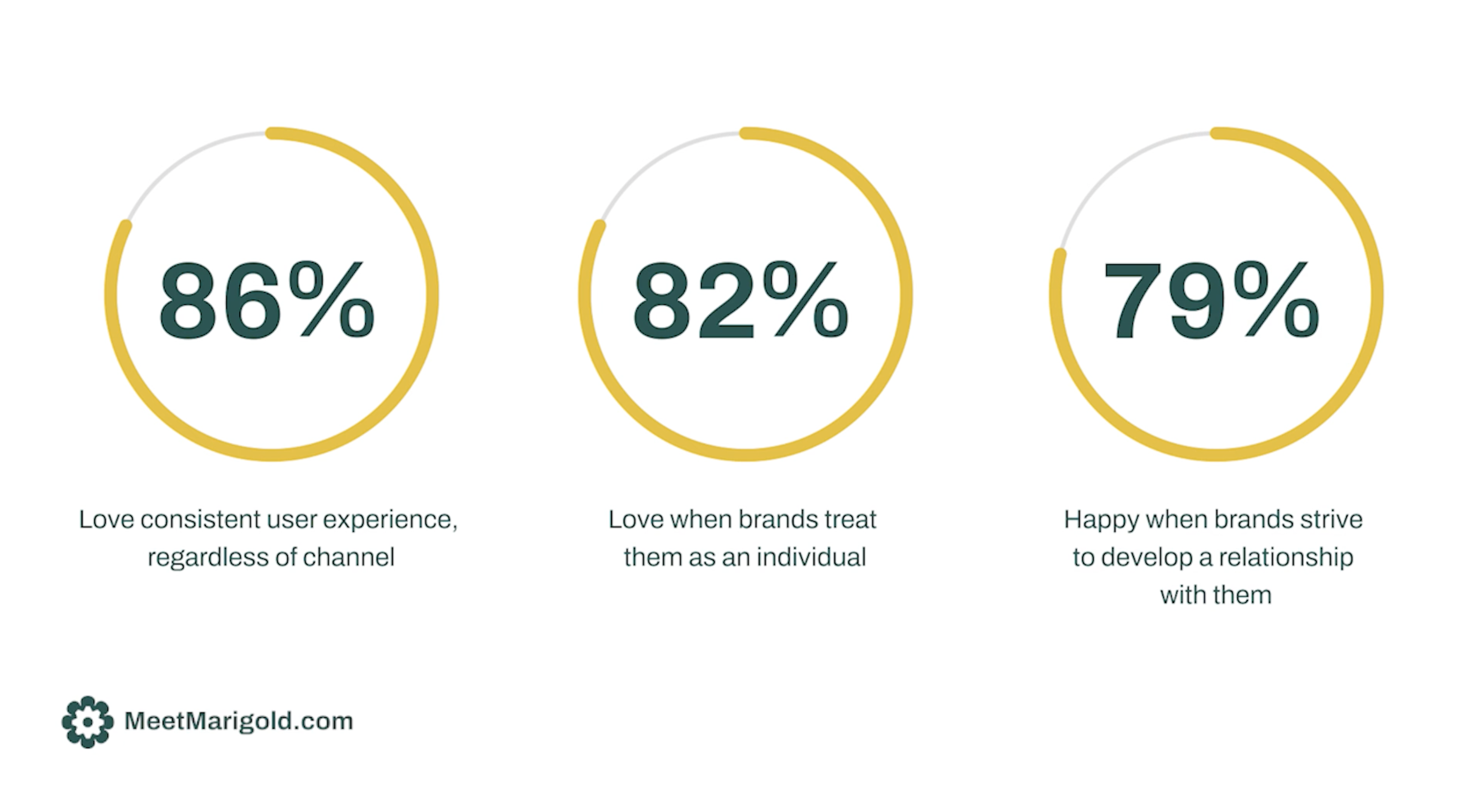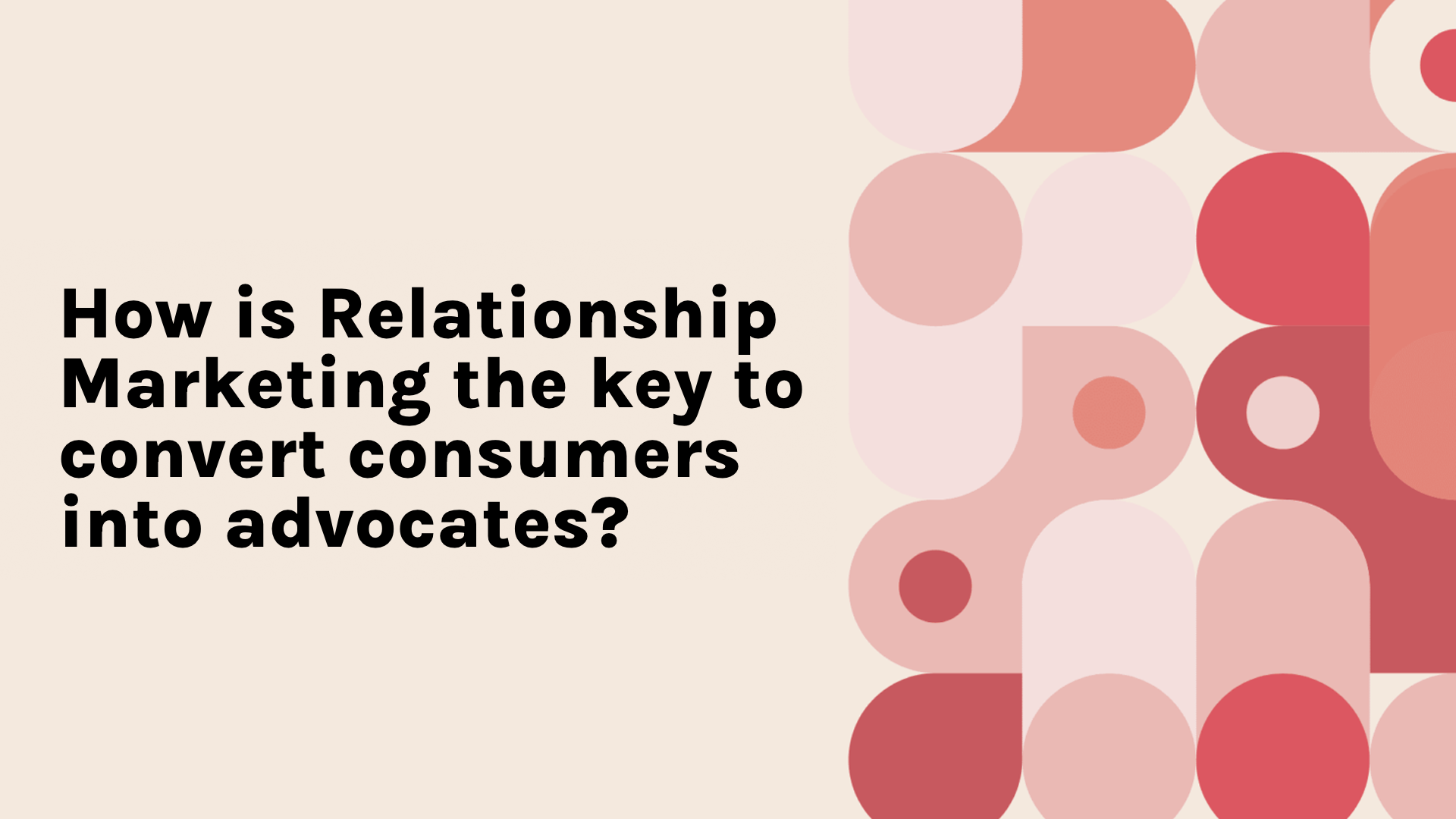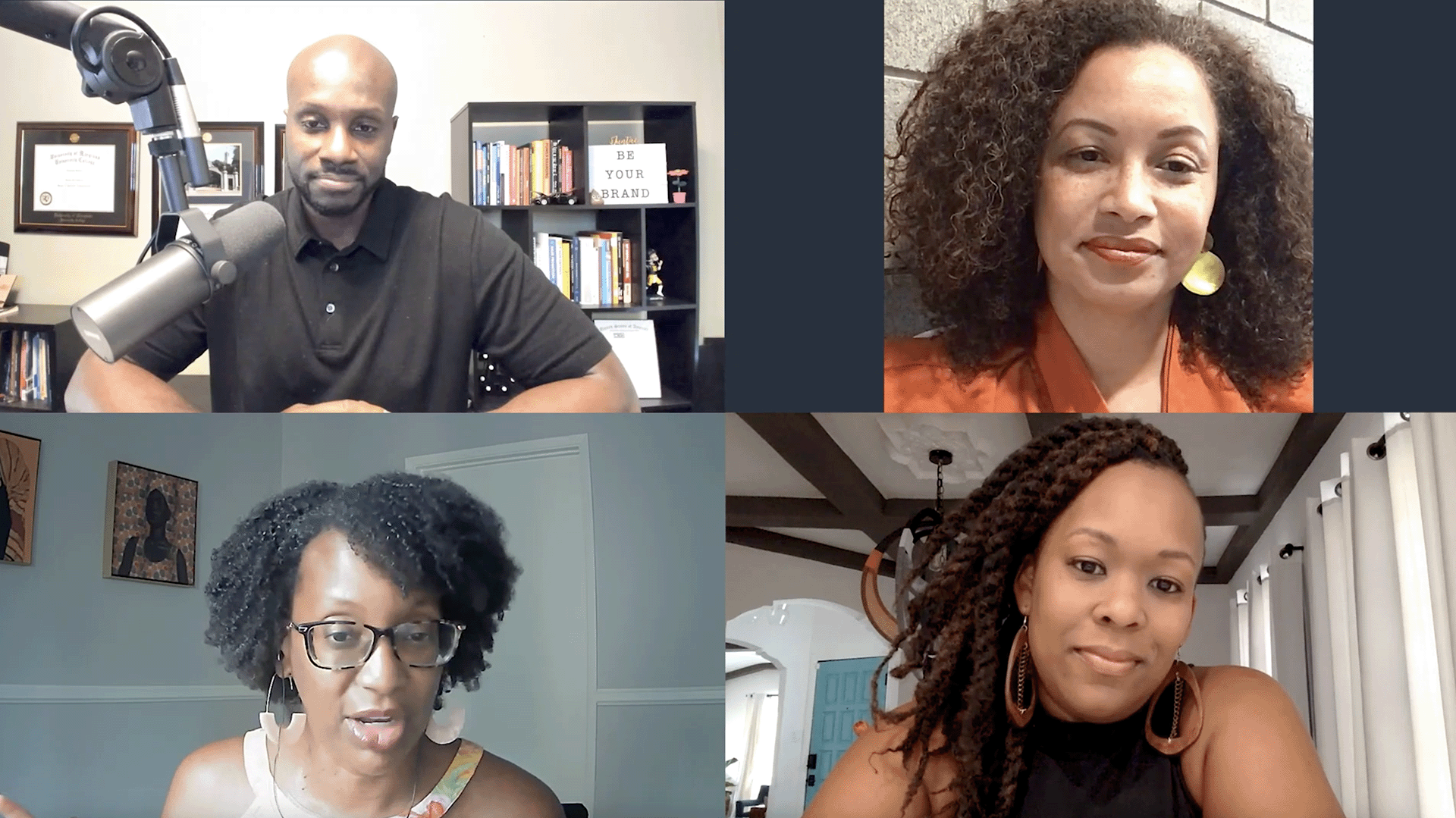More Than a Product Quiz: Zero-Party Data Across the Customer Lifecycle
- 0.5
- 1
- 1.25
- 1.5
- 1.75
- 2
Steph Liu: Hi, I'm Steph Liu. I'm an analyst of Forrester Research covering the intersection of privacy and marketing. Today, I wanted to run through how to use zero- party data across the customer life cycle. Now, before I launch into this, I want to make sure we're all on the same page about what zero- party data is because it's getting a lot of buzz lately. So zero- party data is a term that Forrester coined back in 2017 and it's data that a customer intentionally and proactively shares with a brand. I have bolded those words because that's what sets zero- party data apart from first- party data. This is not data that you have to share as part of completing a transaction or doing business with a brand, it's data that you're choosing to volunteer because you like the brand and are getting some sort of benefit in exchange. Now, here's why it matters. Customers want relevant content and experiences. Forrester's data shows that 34% of U.S. adults say they're more likely to purchase from brands that share content that interests them. And of people who join loyalty programs have said that getting those messages, offers, and promotions that are relevant is a key reason for why they sign up in the first place. They just don't like how we're doing this today. Only about a fifth say that the information companies collect about their behaviors makes their online experiences better. Let's be super clear here. We're talking about a ton of data that is all collected in the name of improving experiences, right? We have gotten to a point where consumers are convinced Facebook has hacked their microphones because they talk about something and then they see the ads that are targeted based on that conversation. Now, no one's been able to independently verify that this is happening. In reality, we leave a whole data trail, right? We have a conversation with someone, we usually Google something or search a trivia fact based on that conversation. And Facebook is really good. I would argue too good at picking up on those data crumbs and using that for targeting. Another example is Wayfair who had a very short lived program called Proactive Customer Success. Sorry, Proactive Customer Service. And basically if they saw you shopping on the website but you didn't complete a purchase, they would call you in the hopes that offering over the phone support would push you to making that purchase. Now, on the backend, it's not too hard to figure out. If you're Wayfair customer, you've got an account, you're signed in, they have your phone number from past transactions. But on the customer experience side, this felt really creepy and consumers took to Twitter to complain about this because it felt like Wayfair was watching their every move. So when I say it was short- lived, I mean the feedback was quick and brutal and they shut down the program. We also asked members of Forrester's consumer voices panel for their opinions on personalization. And here are three quick quotes here. One is from a guy who says he used to think personalization was beneficial, but he no longer does since it has become too invasive and untrustworthy. Or this woman who says, " Everyone tells the story of I looked at a jacket once and now it's following me across the internet. It's not helpful, it's not showing anything new or giving me a discount, it's irritating and a little creepy." Or this woman who says she does not like it when she gets an ad for an item that she looked at but didn't put in her cart. She feels like, " Okay, now quit stalking me." It's a little scary and it makes her feel uneasy. On top of that, we're also seeing so many headlines about companies that we know, and in many cases are customers of getting hit with privacy fines. Things like TikTok, violating the Children's Online Privacy Protection Act, Facebook whose facial recognition violated Illinois Biometrics Law, France, finding Google and Amazon for tracking cookies without consent, or a Catholic priest who was forced to resign after his anonymous and commercially available data outed him as a Grindr user and a frequenter of gay bars. Now, what I want to call out about these headlines is these are not security breaches in the classic sense. There is no hacker inappropriately accessing a system, hacking into servers or customer data logs. These are all cases where the company itself chose to inappropriately collect or share customer data. So it's a different realm, right? There's no third party that you can blame as the bad actor. These are all cases where the company's own data strategy led them astray. On top of all of that, you've also got the tech side of the story. Big companies like Microsoft, Apple and Google putting their stake in the ground. So for Microsoft, when you switch to Edge or when you update your Edge browser, they promote five benefits of using Edge and privacy is front and center. For Apple, they release new privacy features with almost every operating system update. The splashiest of which was the app tracking transparency framework, which creates this new consent popup that asks if you want to share your device ID with specific apps. And then there's Google who's been piloting the Privacy Sandbox and Topics API as they look for a solution to life without cookies. Then announcing that they're taking those experiments, expanding them from Chrome and moving them into the Android mobile environment. S. O when you take all these forces together, what marketers are facing is what Forrester calls data deprecation and it's four forces. The first one is consumer action, right? As our opinions on personalization gets stronger, consumers are taking action to try to protect themselves. They're doing things like using ad blockers. Their browsers do not track setting or the global privacy control, and they're clearing browsing histories. They're also going into their device settings, so try and limit data sharing that way. For example, limiting how many apps can access their location. You also have browser and operating system restrictions. This is the much discussed death of the third- party cookie, but it's also, as I said earlier, the different privacy features Apple is baking in to limit things like email tracking. You also have privacy browsers like Firefox and Brave who have already been blocking third- party cookies for years. The third force is privacy regulation. Of course there's the GDPR, the Landmark 2018 European privacy law. But this is a global issue. Brazil has its own version of the GDPR called the LGPD. And in the U.S. we see more and more states introducing and passing privacy laws such as the California Privacy Rights Act. And finally, our walled gardens. These are companies who know they're sitting on incredibly valuable customer data, so they're putting in limitations for how marketers can access and use that data. In essence, the walls of the walled gardens are getting taller. On top of that, you have more companies building their own walled gardens, companies like Target and CVS, and Best Buy, and Kroger. So not only are the walls getting taller, you're also seeing more walled gardens overall. When you take these four forces and you put them together, what's essentially happening is marketers access to consumer data is being cut off at the knees. And this is a really, really rude awakening for brands who've had the luxury really of accessing consumer data with very few limitations for the last couple decades. This is where zero- party data is really valuable because it can help you understand your customers and try to fill in some of the gaps that data deprecation is causing. It can let you build relationships in ways that are transparent. Now, the most common use case for zero- party data today, I'd say it's a tie between sweepstakes entries and the product recommendation quizzes. But really you can use zero- party data across the entire life cycle. So this is Forrester's customer life cycle. It is seven stages, and I'm going to walk you through examples of zero- party data at every single stage, starting with discover. So discover as the name implies, is when you are discovering a brand or a product for the first time, typically through advertising. So what I'm seeing is companies who are actually taking zero- party data and injecting it into a dynamic ad so that when you click through the ad, you get a product recommendation that's relevant to you and your needs. And this, in my opinion, is a much better experience than trying to follow someone across the internet to guess what they're interested in. And in this case, which running shoe is right for them. So HOKA, which is a sneaker company is asking what are you going to be using the shoe for? Are you running, walking, cross- training, hiking, et cetera? It will ask you a couple more drill down questions. For example, if you select running, it will ask if you're a trail runner or a pavement pounder and use those inputs to show the shoe that's right for you. And eventually you can click on the product listing and it will take you to the HOKA website. But again, it's asking you directly, what do you need out of a shoe as opposed to trying to infer this information or buy this information from a data broker. Very, very similar experience with Dick's Sporting Goods. It's all about find the right bat for your game. So whether you're playing baseball, softball or T- ball, you can find the right bat. And I'm sure it goes into the specifics of wood versus aluminum. But ultimately it's about finding the right bat for your needs. Another way of using this in the discover phase is on your owned properties. So this is an example from the Business Development Bank of Canada, which is a B2B bank. And if you've ever gone to a financial services website for the first time, it can be pretty overwhelming. They have a huge range of products tailored to very different audiences, and it can be difficult to understand at a quick glance which ones are right for you. So what the Business Development Bank of Canada does is if it notices that you're a first time site visitor, it asks what's your business goal? And your options are things like managing cash flow or finding the right loan, getting new customers, buying or selling a business. And depending on how you answer, it will show you a landing page that's relevant for you. So in this case, I selected finding the right loan. So it led me to this flow chart on how to get financing. And for each step I can drill down, learn more about the process and about the products that are relevant and useful for me. So a really good way of removing some of the friction and lowering the barriers to product discovery. All right. So we've discovered the brands and products. The next step is evaluate. This is where you're in the product research phase. You're not sure exactly which products you're going to be buying. This is where product recommendation quizzes really shine. Evenflo is a baby product brand and they know that there is a lot of product research that goes into these part just decisions, and there's a lot of pressure. Nobody wants to feel like they've picked the wrong thing when it comes to something as critical as a car seat and keep keeping your babies safe. So they built a product quiz around strollers and car seats, and it asks basically if you want to buy them in combination or separately and what you're looking for, what your priorities are, whether it's the fabric and look and feel or the safety aspects, if it's going to last more than the first six months or ease of use. And based on how you answer, it will tell you which combination of car seat and stroller is ripe for you. Another example is from Bank of America. When you sign up for a checking account at Bank of America, they actually have three tiers of accounts now, which I did not realize until I visited their website. In case that sounds overwhelming, don't worry because they built a, which is best for you quiz. It is only four simple questions. How much do you plan to keep in your account? Are you a student? Will you be using direct deposit and do you want physical checks? That's it. Based on your inputs, it will tell you which product is the right one for you and why. It's a mix of trying to lower the monthly fees and make sure that you're getting the services and products you want like physical checks, if those are important to you. All right. So by now we've done our product research, we understand our options. We're moving into the buy stage. We're ready to commit to a purchase. One way to drive purchase is to offer an incentive to create an account and essentially use that as a launching point to build a longstanding relationship. I'm seeing this more and more often with retailers. They'll offer you free shipping as an incentive for creating an account. So a Radio Flyer did this when I was purchasing a product from them. And this is actually a missed opportunity because when I created the account, it took all of the data I inputted to make the purchase and basically just asked me to put a password on top of that. If they had taken that opportunity to ask me one question about the age of my child, at that point, they could have nailed the welcome email, which is on the right, but they didn't. So instead, the welcome email is basically every category of toy that Radio Flyer sells. But if they had taken that moment to ask, is it an infant or a young toddler, older toddler, elementary school kid, whatever, if they had asked, they would've known that I had a baby who was not walking yet. And if I put him on a balanced bike, he is going to crash and burn. So most of the toys in the welcome email were not relevant at that point. They could have showed me the walkers and toys that were more age appropriate. So this was a missed opportunity. They could have really shown me products that were spot on at the right age for my kid and driven me to make another purchase. All right. So by now we've made a purchase. We're starting to build the relationship with the brand, start to use the products. And one way to do this is to be more than a transaction with personalized followup emails. This is an email from Hanna Andersson, which is a baby clothing brand. Yes, there are a lot of baby examples here. You can probably tell some things about my shopping history. But in this case, I was actually buying clothes as a gift. What I liked about the transaction email is it has this complete the look section, which is specifically here are pants that match the onesies you bought, or here are some other outfit options. I liked that it was tailored to what I had actually purchased as opposed to really generic, " Here are some popular products that we have." Again, it's much more tailored. It feels more personal. Here are the sort of outfit completing pieces if you're interested in them. Another great example comes from AAA. When you become a AAA member, it asks in the confirmation email, " What benefits, savings and products do you want to learn more about?" And I think this is a great idea because AAA has a huge catalog of perks now. And using those perks is a huge driver for why people become members in the first place. So AAA, of course, wants to make sure you're taking advantage of the perks and discounts and being an engaged member. So it broke its categories of discounts down to 12 buckets, loans, whether that's home car or student, insurance products, roadside services, and different type types of discounts, for example. Now it can get more granular over time. For example, if you say you're interested in travel packages, there's a huge difference between someone looking for a resort getaway versus someone who prefers RV trips, right? And AAA can eventually get to that level of detail by asking what kinds of vacations you're into or what you have coming up. But they don't need to know all of that right off the bat to understand which benefits they should be promoting for you and reminding you exist versus which ones to deprioritize. All right, so we've gotten the product or we've bought the AAA membership, now we're moving into participate, which is you're starting to use the product more, you're starting to interact with the brand more. So one way to do this is to be relevant to drive customer engagement and this is where delivering a great customer experience really, really pays off. So this example is from Rent the Runway. And as part of your member profile, you can fill out some very granular detail on your size, your height, your weight, your clothing size, your body shape. All of these different inputs. And what's great about this is how Rent the Runway uses that data. So first, it will filter its massive inventory of clothes into the ones that come in your size. And because of Rent the Runway's model, you can only rent so many items of clothing at any given time. So a huge factor into deciding what dresses or what clothes to rent is by reading the rating and reviews. So when you go to a dress and you look at the reviews, you can actually filter them by people like me. And that generally means people who are the same size and the same body type. You can see photos of that dress or that article of clothing on real people, which is plays a huge role in ultimately deciding if you think something will work for the event you're going to and for your body type. And that has the added perk for rent the runway of increasing the likelihood that the clothes you rent are going to work for you. Another good example is from Sephora. So when you join Sephora's loyalty program, they send you this email, they push you to download the app. Of course you download the app and it's got tips and tricks inside. One of the tips is to build out your beauty profile. And for Sephora and for the beauty industry broadly, it's going to ask about skin type, skin tone, skin care concerns, hair color, eye color, all of these different data points. And the beauty industry broadly is really, really good at zero- party data because they understand there are so many different data points that will influence what kinds of products work for you. And this is not data you can buy from a data broker. It's not data you can infer from someone's purchase history alone. So they've gotten very crafty in trying to create different experiences and different incentives for capturing this data. What's great about this though is how Sephora uses it. So when they make product recommendations, which is the screenshot on the right here, it specifically says why? Here's an eyeshadow for your green eyes only. Here is a foundation for your light complexion, a moisturizer for your oily skin. It's very transparent, right? Here's what you've told us about yourself, here's how we're using it. And if any of this data is inaccurate, if it's the summer, you've picked up a nice tan, you're no longer a light complexion, the edit your profile button is right there. So you can update your profile quickly and your product recommendations will refresh accordingly. Again, it's so much more transparent than we buy your data from a data broker. We can't really explain how it was sourced. It's probably through your browsing and shopping histories. And through that, we've guessed that you have a light complexion. All right, the next step in the customer life cycle is actualized. This is when you start to realize the value of having a relationship. And this is where it's important to remind customers of the value that they're getting from being a customer, from being engaged. Buffalo Wild Wings, as part of their loyalty program will ask you to build out your profile. And for those of you unfamiliar, Buffalo Wild Wings is a chain of restaurants and bars, very sports oriented. So they're going to ask about all of your sports interests, and it asks about every league under the sun, basically. And it can take these inputs to remind you of an upcoming game, right? And remind you that Buffalo Wild Wings will have it on TV, so you should stop in to root for your team, grab your favorite wings and your beverage of choice. This is really helpful for someone like me, because I am a huge soccer fan. I watch the Premier League in the UK and kickoff times because I'm in Boston, can range from 7: 00 AM to noon. And it can be hard sometimes to guess if a bar is going to open at 7: 00 AM for soccer because it's not a super common request. And the World Cup is coming up later this year based in Qatar. So again, very atypical kickoff times for the standard American sports fan base. Buffalo Wild Wings can use that as an opportunity to say, " We've got your back and we know when your favorite team is playing. So pop on in, again, rack up, some loyalty points. We're here for you. We've got your game of choice on TV." The final stage here is advocate. This is when you're turning those loyal customers into brand advocates. And one way to do that is to ask for their inputs on how to improve the relationship. This is an example from NARS which is a luxury cosmetics brand. And they built an experience in early 2020 when COVID basically shut down the world and was incredibly disruptive. So for NARS, they knew that the impact was going to be severe because the way we buy cosmetics typically is to go into stores, try the product on in person. So they asked their customers when that experience was paused, what kinds of virtual experiences they wanted instead. So the options were a virtual one- on- one appointment and asked me anything with a makeup artist, a Q&A with the CEO. They asked about six different things essentially trying to take a pulse on how they could continue to serve their consumer base during the pandemic. Another example is to involve customers in the product development process because it keeps them engaged and it makes them feel like their opinions are valuable. These screenshots are from a food delivery service that I use occasionally and they basically prepare a fresh menu every week. When you get the bill, they ask, " How is your meal? Should we put it on the menu again?" And they'll ask for your feedback about what you liked and what can be improved. What I like about it is when you submit it says, " Thank you." The info you just sent will help our culinary and operations team make decisions like what items to repeat. So it makes your opinion feel valued. And sometimes on menus, they will brand some of the items as family favorites for particularly popular meals. It feels bidirectional, right? I'm not just a customer. This is not just a transaction. They actually want to know how I felt about the meal, what I liked about it, what could be improved for next time. So there you have it. That's zero- party data across the entire customer life cycle. But what I want to call out here is that regardless of exactly which stage you're in, the principles of zero- party data don't change. And there are three key principles. The first one is to be transparent. Explain why you're asking for that data and how you'll use it. And don't use this data in ways customers wouldn't expect. The analogy that I always fall back to is that it should be a conversation. It should be like a first date. When you roll into a first date, you don't have the 50 questions you need to know right off the bat. That's an interrogation and that's generally a really, really bad date. Instead, the goal is to start a conversation and get a second date. The goal is to continue the conversation, assuming everything goes well with the first date. So rather than try to interrogate customers about everything you would want to know about them, think about what are the key pieces that we need to know now to start building a relationship, and then how can we add to that over time? The second principle is to offer meaningful choice. And this means not forcing customers to share data beyond what you absolutely need, for example, to fulfill an order, but instead letting them share the data when they're comfortable doing so. And you can already see just from the customer experience of browsing different websites, which companies have let this principle fall by the wayside because they're the ones who are putting on every page of their website a popup that asks for your email address. If you think about what that would be like in real life, it would be like someone following you down the street constantly asking you for your phone number, right? It's super strange. It's not very enjoyable. It can be uncomfortable. And so instead, think about what data do we need again to benefit the customer? And is it okay if we don't have it right away? And the answer is probably yes. So then you have to think about how are we going to entice customers to share this data, which brings me to the third principle, which is to deliver a fair value exchange. You have to remember that ultimately we are asking customers to volunteer more information about themselves. And because of that voluntary aspect, there needs to be something in it for them. And it's essentially a way of thinking them for sharing their information, for taking the time to participate with the brand. Now, if you don't follow through on this, if you're asking for data and nothing seems to come of it for the customer, you're unintentionally training them that their data has no value and won't be helpful for them. And that's a problem because the next time you ask for data, they're probably not going to share it because there's no upside for them. So it's really, really important that you take the time to think about how am I going to use this data, not just for my own purposes, but to actually benefit the customer whether that's improving recommendations, improving personalization, or identifying better ways to help them. I want to be clear here. This cannot just mean sending more messages. That's not a benefit for the customer. It has to be something that improves their experience so that when you ask for data the next time, they will understand that there is a benefit for them. And again, it will be a key aspect of how to build out that relationship over time. Thank you so much.
DESCRIPTION
When it comes to walking the line between personalization and creepy marketing, Forrester Analyst Stephanie Liu is the expert. Stephanie specializes in marketing and privacy, and a focus on the balance between privacy, trust and consumer expectations. In this session, she’ll explore how the death of the cookie, otherwise known as data deprecation, will disrupt how many marketers operate – and how zero-party data is the solution many marketers are looking for.
Takeaways:
- Four forces of data deprecation are drastically limiting marketers' access to consumer data.
- Zero-party data can help marketers personalize without being creepy -- if they use it strategically.
- The key to zero-party data is how you collect it: transparently and in exchange for a value or benefit.
Today's Guests


